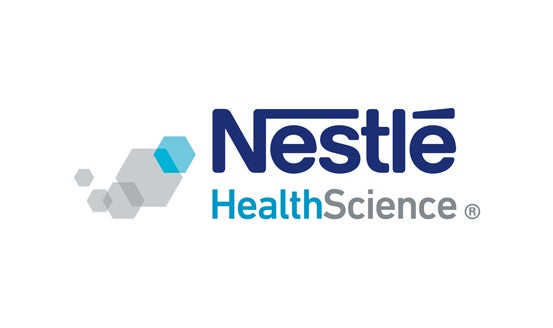
CoMiSS: New awareness tool now available to assess Cow’s Milk Protein Allergy type symptoms in primary care
Vevey, Switzerland, 10 April 2015 – A panel of leading international experts has developed the Cow’s Milk-related Symptom Score Tool (CoMiSS) [Vandenplas 2014] which is now available in an easy to use format through Nestlé Health Science. It is a scoring system based form designed to help primary healthcare professionals earlier recognise and assess non-specific symptoms – originating from various organ systems - that may be related to cow’s milk protein allergy (CMPA) in infants. This condition occurs in an estimated 2-3% of infants [Høst]. Existing data shows that the predictive value of the tool in identifying infants at risk of CMPA can be 80%.
Difficulty assessing these symptoms has meant CPMA is frequently under, over or mis-diagnosed, or diagnosis is considerably delayed until a food challenge is eventually organized and undertaken by paediatric specialists. Use of CoMiSS at primary healthcare level should increase awareness of recognition of CPMA symptoms to help accelerate decision-making and correct management of a condition that can lead to poor growth and development if not addressed. CoMiSS may also be used to evaluate and quantify the evolution of symptoms during a therapeutic intervention.
CoMiSS takes anywhere between 5 and 15 minutes for the practitioner – usually a doctor - to complete in conjunction with a parent (bringing their infant) based upon discussion of past and present symptoms. Scores are assigned to crying, regurgitation, stool, skin and respiratory symptoms. Total scores ranges form 0-33. A score of 12 or above picks up the criterion for infants at risk of CPMA. Ease and speed of use are key advantages as Professor Vandenplas, Chair of the 11 strong Expert Consensus Panel – all of whom are clinicians with expertise in infant gastrointestinal problems and/or atopic diseases - explains “Busy primary healthcare professionals are not expected to be expert in such complex conditions. This tool addresses that reality with a fact-based scoring system encompassing key measures. Easy and rapid to use, we believe CoMiSS is a pro-active step forward in reducing the delays and difficulties often seen in the management of CMPA. These can be distressing for the infant, parents and not least healthcare professionals.”
There is no diagnostic test for CMPA. Although functional GI symptoms such as regurgitation and vomiting, constipation, crying and colic are considered to be related to the ingestion of cow’s milk,[Koletzko 2012; Lifschitz 2014; Host 1994] atopic eczema is often not recognised as a possible consequence of ingestion of cow’s milk protein. CoMiSS is not designed to identify anaphylactic or immediate IgE-mediated reactions or to provide a diagnosis of CMPA. The diagnosis can only be confirmed by an elimination diet followed by an oral food challenge. The CoMiSS will be evaluated in prospective randomized studies to assess its efficacy in identifying cow’s milk related symptoms that respond to elimination from the diet.
The Expert Consensus Panel meeting to review and discuss the data was held in September 2014, supported by an unrestricted grant by Nestlé Health Science. Panel Chair Professor Yvan Vandenplas is Chair of Paediatrics at the Free University of Brussels Academic Hospital, Belgium. Their consensus paper has been published by ACTA Paediatrica on Acta Paediatr. 2015;104:334-9; click here: http://www.ncbi.nlm.nih.gov/pubmed/25557474.
The Consensus Panel meeting used a structured quantitative method and anonymous voting to reach consensus on all aspects of the new tool.
Nestlé Health Science has made the scoring tool available in an easy to use format. It is currently available in English language, but will shortly be published in several languages and through national Nestlé Health Science websites, as well as the global website.
References
- Høst A. Frequency of cow’s milk allergy in childhood. Ann Allergy Asthma Immunol 2002;89(Sup1):33-7
- Høst A. Cow’s milk protein allergy an intolerance in infancy. Some clinical, epidemiological and immunological aspects. Pediatr Allergy Immunol 1994;5(5 suppl):1-36.
- Koletzko s, Niggemann B, Arato A, Dias JA, Heuschkel R, Husby S et al. Diagnostic approach and management of cow’s milk protein allergy in infants and children: a practical guideline of the GI-committee of ESPGHAN. J Pediatr Gastroenterol Nutrition 2012;55:221-9.
- Lifschitz C, Szajewska H. Cow’s milk allergy: evidence-based diagnosis and management for the practitioner. Eur J Pediatr 2014 (in press).
- Nwaru BI, Hickstein L, Panesar SS, Roberts G, Muraro A, Sheikh A. Prevalence of common food allergies in Europe: a systematic review and meta-analysis. Allergy 2014;69:992-1007.
- Vandenplas Y, Dupont C, Eigenmann P, et al. A workshop report on the development of the Cow’s Milk-related Symptom Score awareness tool for young children. Acta Paediatrica 2014, 29 December [Epub ahead of print] doi: 10.1111/apa
More information
